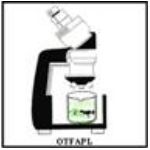AGLS 6502 Lecture 14.5 - Wildlife Farming Applied
14.15 Some Species With Potential for Wildlife Farming in Trinidad and Tobago and French Guyana
Captive bred stock will prevent the possible extinction of the indigenous animal wildlife species. In Trinidad and Tobago these animals include the Agouti( Dasyprocta leporina), Lappe(Agouti paca ), Cocrico (Ortatis ruficauda ) and the Deer (Mazama americana).
But in Guyana on the South American mainland these animals are plentiful. In the other islands of the Caribbean other useful species include the Mountain Chicken (Leptodactylus fallax) in Dominica; the Jamaican Rock Iguana (Cyclura collie) and the Bahamian and Jamaican Hutia (Geocapromys brownii) in Jamaica. These latter two are on the world list of endangered species.
Wildlife Farming could also ensure that there will be a gene pool in the wild for future work on the improvement of the captive reared wildlife stock. It was concluded that, wildlife farming had a multi-purpose role to play in Trinidad & Tobago and should be encouraged.
References:
Peres, C. A. (1999): Effects of Subsistence Hunting on Vertebrate Community Structure in Amazonian Forests. Conservation Biology 14: 240-253.
Chardonet, des Clers, Fischer, Gerjold, Jori and Lamarque (2002) have categorized the value of wildlife under the following headings:
1] The Economic Importance of Wildlife
- Non-consumptive uses
- Consumptive Uses
- Wildlife Products
- Products from Live Animals
- Products from Dead Animals
- Wildlife Farming
- Wildlife Hunting
- Subsistence Hunting
- Commercial Hunting
- Sport Unting
- Wildlife Husbandry
- Wildlife Ranching
- Reindeer Herding
- Game Ranching
2] The Nutritional value of Wildlife
3] The Ecological Role of Wildlife
4] The Socio-cultural significance
In the USA in 1996 it was estimated that 35.2 million individuals fished, 14 million individuals hunted, 9.5 million individuals hunted and fished, and 62.9 million individuals participated in at least one type of wildlife viewing activity [Chardonet et al (2002) citing Anon (1996)]. They also reported that the total expenditure on all wildlife related activities in 1996 was estimated at US$101 billion. These types of records are not available from within the neo-tropics very easily.
The non-consumptive use of wildlife are associated with viewing wildlife and this generates revenue through money spent on accommodation, transportation, food, equipment and miscellaneous goods used by individuals enjoying wildlife activities.
References:
Chardonet, Ph., des Clers, B., Fischer, J., Gerhold, R., Jori, F. and Lamarque, F. (2002): The Value of Wildlife Rev. sci. tech. Off. Int. Epiz. 21 (1): 15-51
We would now continue this module by introducing you to what we know about the production systems development for the following non-domestic animals:
Rodents: Agouti ( Dasyprocta leporina )
Capybara ( Hydrochoerus hydrochaeris )
Reptiles: Iguana ( Iguana iguana )
Red tailed Boa ( Boa constrictor constrictor )
Marsupial: Opossum ( Didelphis marsupialis insularis )
Aquatic: Cascadura ( Hoplosternum Littorale )
Tilapia ( Tilapia nilotica )
References:
Brown, Roxann, C. ; Garcia, G. W.; Manick, M.; and Poujade, S ( 1994): A Case Study: Wildlife Farming in Trinidad. Proceedings of TA 2000, Tropical Agriculture Special Edition 171-174
